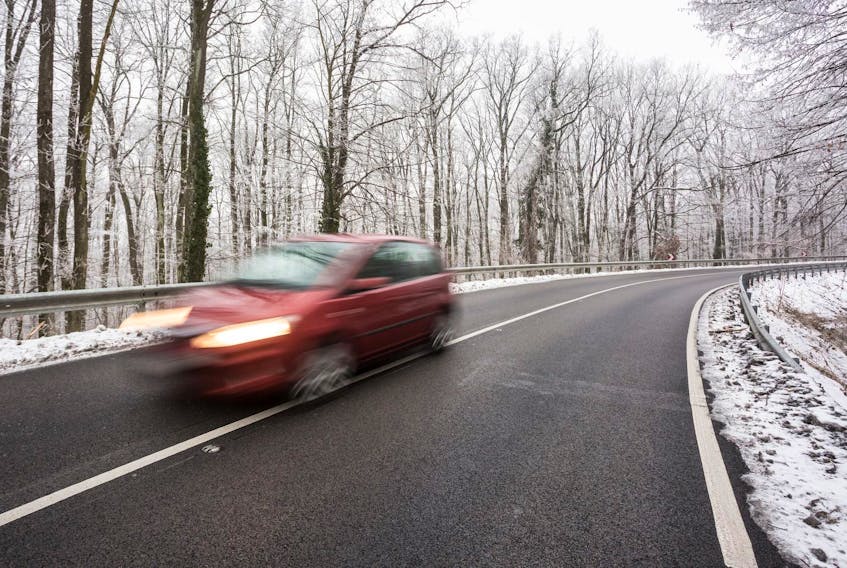One of the worst situations any driver can encounter is a surprise.
When that surprise is a total loss of traction or grip the results are frightening and can often lead to a crash.
The dictionary describes black ice as “a thin, nearly invisible coating of ice that forms on paved surfaces.”
It can be all but invisible, and even blend in nicely with grey or darker surfaces.
Early and late winter, are the most likely periods when we’ll encounter black ice. It usually forms at dawn or just prior to dusk, when a millimetre thin layer of moisture on the road is created by a difference between air and surface temperatures — condensation.
This tiny and often invisible layer of moisture can also appear at other times of the day and year as well. But it is particularly prominent at this time when the sun still has some punch but the ground is cool.
Another situation, which often surprises motorists, occurs when the road is damp on a sunny day.
When the sun is out, it generates enough surface heat to maintain the moisture in a liquid state. But when it goes behind a cloud or is shaded by a tree or other object, the resultant minor drop in temperature may be enough to convert that liquid to a solid — ice. Even a single degree can do it.
We are separating black ice from “normal” ice, which is frozen surface water — but both require the same reaction and degree of caution.
The first step in surviving an encounter with black ice is to be alert for its presence. If the road is damp and the thermometer hovering near the freezing point, look well down the road for signs of shady areas created when the sun is blocked by an object.
Slow down and be very wary indeed. Even if the road is dry, such shaded areas might still be damp and contain the dreaded black ice as they haven’t been dried off by old sol.
Another small reminder you may be about to encounter a problem, is to watch oncoming vehicles for signs of moisture. Are their wipers on? Is there moisture dripping off the undercarriage? Are the oncoming motorists driving slowly or seeming to be displaying extra caution?
All of these might be an indication there is an unpleasant surprise waiting for you over the next hill or around the coming corner. This is especially likely at dawn and dusk when the sun is low on the horizon and even minor elevation changes will create shadows and likely black ice spots.
If you do find yourself coming unto an area of black ice, slow down and try to keep the steering straight, if possible. Slowing down, means getting off the accelerator.
Do this smoothly, don’t snap your foot off the gas — this will transfer additional weight unto the front tires too quickly, increasing the likelihood they won’t be able to cope with all the forces placed on them when they hit the ice.
If you have time to brake before the ice, do so, but if not, avoid the brakes unless you have ABS. If so-equipped you can apply the brakes at any point.
If you encounter black ice with the steering and thus front wheels turned, you will likely encounter what is known as understeer — the front of the vehicle will keep going straight regardless of steering input.
As with all-vehicle-control issues, the main trick is to avoid sudden movement and panic. Ease off the throttle. Avoid the natural reaction to turn the wheel even more; do just the opposite — unwind the steering slightly, turning in the direction the vehicle is going.
While this may be counterintuitive, it will allow the treads of the front tires to assume the correct relation with the surface of the road, and regain grip sooner as speed comes down.
Be ready for the secondary reaction when the front tires do regain grip as they come into contact with a bare road after crossing over a patch of black ice.
If the steering wheel is turned, the front tires will suddenly have traction and snatch the vehicle violently in the direction they are turned.
Remember — look for conditions that will create black ice and avoid panic and sudden movement should you encounter it.









